| Mitigation and Remediation of PFAS |

|
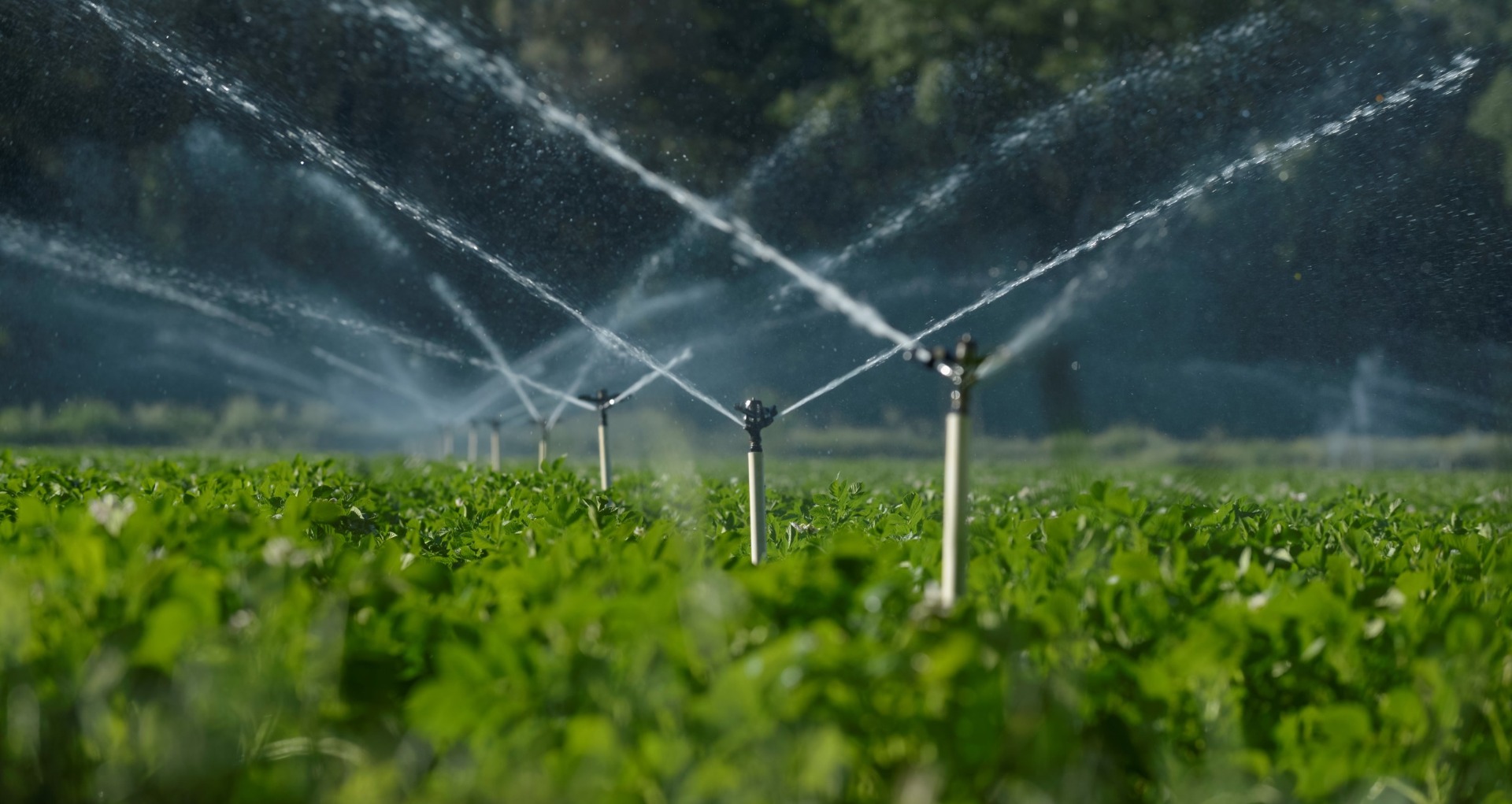
Mitigation and Remediation of PFAS in the Agricultural Environment
Agricultural soils receive per- and poly-fluoroalkyl substances (PFAS) from a variety of sources, most notably biosolids application and irrigation with recycled water. ARS scientists at the United States Salinity Laboratory (USSL) are working to help farmers and other stakeholders overcome the challenges presented by PFAS by improving our understanding of how PFAS are disseminated through soil–plant systems and developing novel, low-cost strategies to reduce their impact. This multi-disciplinary research program offers a unique agri-focused perspective on the PFAS problem.
PFAS Research Projects
Removing PFAS from Recycled Water Used for Agricultural Irrigation
The presence of PFAS in recycled water may lead to the introduction of these compounds into the human food chain if such waters are used for the irrigation of agricultural crops. Even low levels of PFAS may accumulate in soils over time and be taken up by crop roots. USSL scientists are therefore developing a low cost, low energy, environmentally friendly treatment system for the removal of PFAS from recycled water. The system is being optimized for application at the greenhouse scale, potentially allowing for the production of PFAS-free crops for human consumption.

ARS post-doc Dr. Pia Ramos monitoring a treatment system designed to remove PFAS from recycled water
Assessing Varietal Differences in PFAS Uptake by Agricultural Crops
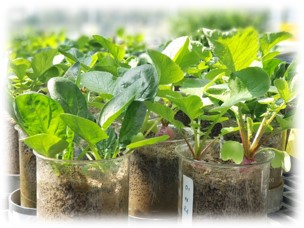
Genetic variations between different varieties of the same crop may lead to differences in the uptake of PFAS into the edible portion of the plant, e.g., spinach leaves, radish tubers, etc. USSL scientists are working to identify which varieties of common crops offer resilience to PFAS uptake and will then study genetic differences between the varieties to explain why this resilience occurs. The work will help growers to select crop varieties that exhibit low PFAS accumulation, thereby helping protect the human food chain.
Preventing Leaching of PFOS from Soil
Extensive use of aqueous film forming foams (AFFFs) at military bases has resulted in soils with very high levels of perfluorooctane sulfonic acid (PFOS) contamination. Surveys conducted by the US Air Force have indicated that leaching from such soils has led to significant contamination of the groundwater below these sites. USSL scientists are conducting laboratory-scale soil column experiments to assess the potential for using biochar as a soil amendment to stabilize PFOS in soil and prevent its leaching down soil profiles. The work will be useful in the remediation management of contaminated sites and potentially help protect groundwater resources.
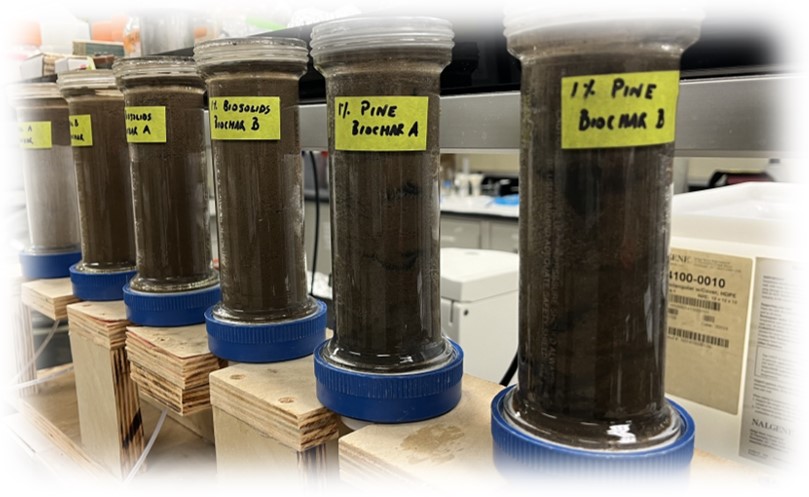
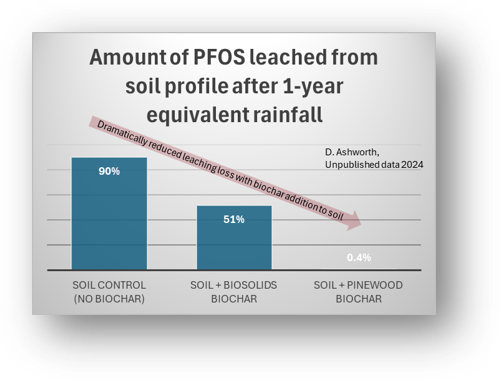
Optimizing Biochar for the Adsorption and Stabilization of PFAS
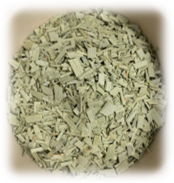

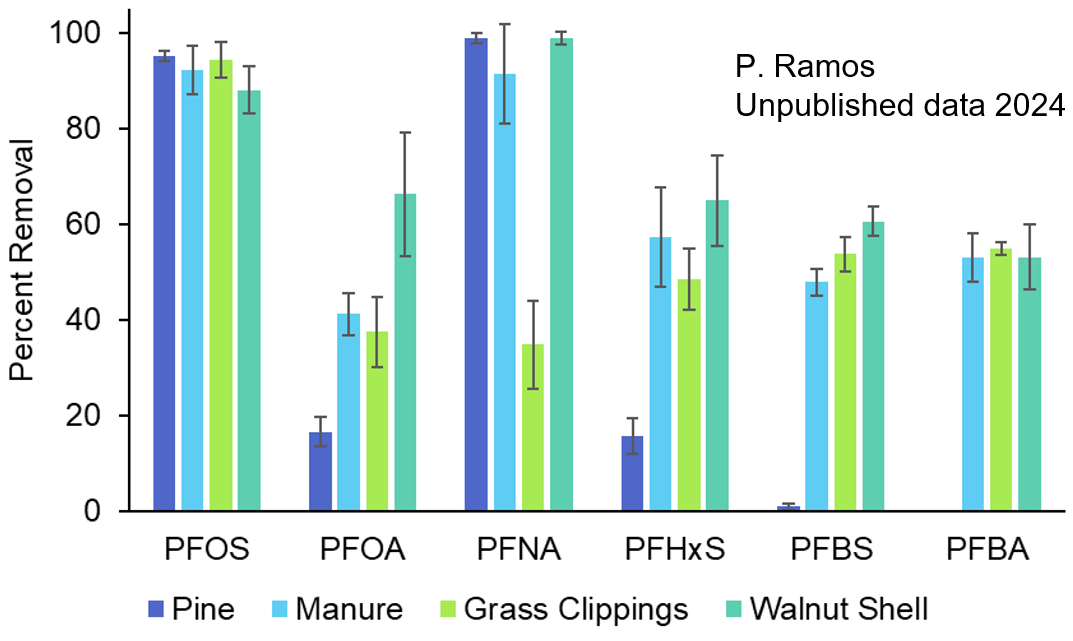
Date palm leaves before (upper left) and after (upper right) pyrolysis. Feedstock selection has a marked impact on PFAS retention by biochars (lower chart)
Biochar is a stable, solid, carbon-rich material made from organic waste or biomass that is heated in the presence of limited oxygen (a process known as pyrolysis). The physical and chemical properties of biochar make it a potentially effective and low-cost adsorbent for PFAS molecules, which is a useful process for reducing their environmental mobility. Much of the PFAS mitigation research conducted at USSL leverages the adsorbent properties of biochar. USSL scientists are optimizing biochar properties via the careful selection of feedstock type, pyrolysis temperature, and post-production modification to maximize PFAS retention.
State-of-the-Art Analytical Capabilities
Given that levels of PFAS in the environment tend to be very low (parts per billion or parts per trillion levels), highly sensitive analytical equipment is required to accurately quantify these compounds. The USSL has the capability and expertise to undertake such analyses using a state-of-the-art technique known as high performance liquid chromatography – tandem mass spectrometry (HPLC-MS/MS).

ARS Physical Sciences Technician Dr. Richeng Xuan operating a HPLC-MS/MS instrument for PFAS analysis
Recent Review Paper on PFAS in Agriculture
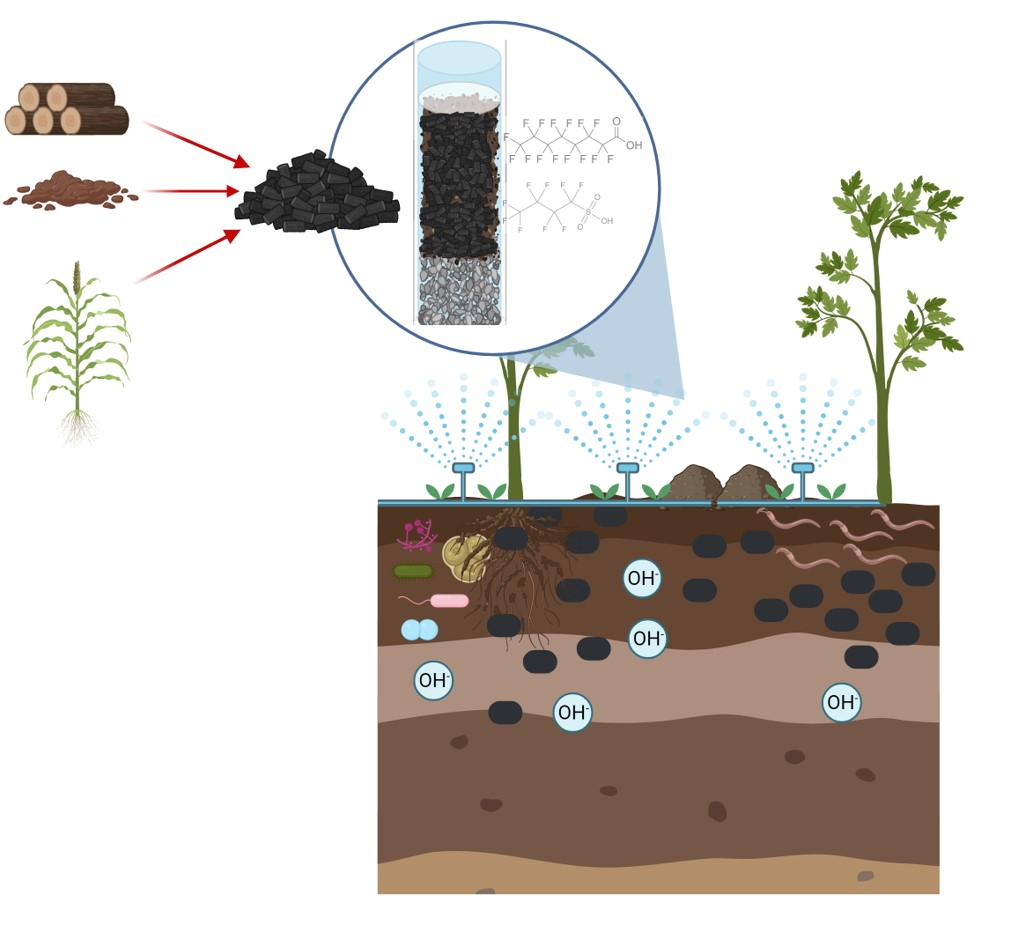
A recently published paper by USSL scientists (Ramos & Ashworth, 2024) reviewed the current literature on PFAS in agriculture and how their impacts might be mitigated. Three main biochar-based PFAS treatment strategies (water filtration, soil application, mixing with biosolids) were reviewed to highlight the benefits and complications of each. The concepts introduced in this review may assist in developing large-scale biochar-based PFAS remediation strategies to help protect the agricultural food production environment.
For more information about PFAS research at the USSL, contact daniel.ashworth@usda.gov
